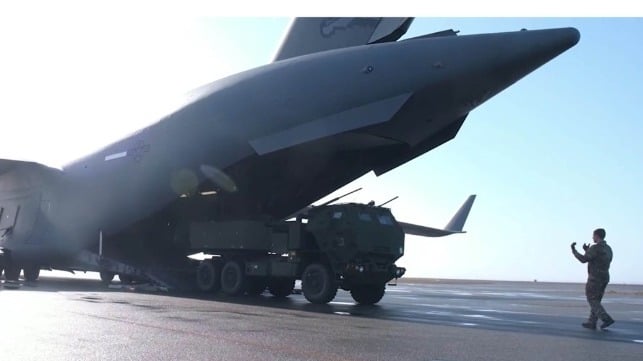After Russian Naval Drills Off Alaska, U.S. Army Sends Troops to Aleutians

After an uptick in Russian military activity in the North Pacific and Bering Sea, the U.S. Army has dispatched mobile rocket launchers and about 130 troops to the Aleutian Islands in order to display its ability to mobilize forces to far-flung sites. The deployment is a rare increase in presence in one of America's most remote regions.
The U.S. military has been closely watching Russian movements near the Aleutians. Over the course of the past week, one Russian tug, one frigate, two subs and eight Russian military planes came close to Alaska, according to the Pentagon. These joint deployments are part of the Russian-Chinese naval exercise "Ocean-24," one of Russia's largest naval drills in recent memory.
According to the Coast Guard, the Russian naval vessels crossed over into the U.S. exclusive economic zone in an apparent effort to avoid drifting sea ice. The cutter USCGC Stratton monitored their progress and reported that the small flotilla "operated in accordance with international rules and customs."
In July, the cutter USCGC Alex Haley encountered another Russian naval vessel about 30 miles southeast of Amukta Pass. The same month, four Chinese warships were spotted north of the Aleutians.
After the uptick in foreign activity, the U.S. Army dispatched a small task force with airborne troops and two HIMARS rocket launchers to Shemya Island, home of Eareckson Air Station. The last HIMARS deployment to Shemya occurred in 2020, and the Army described the exercise as a test of its ability to rapidly move forces to remote areas.

that matters most
Get the latest maritime news delivered to your inbox daily.
“As the number of adversarial exercises increases around Alaska and throughout the region, including June’s joint Russian-Chinese bomber patrol, the operation to Shemya Island demonstrates the division’s ability to respond to events in the Indo-Pacific or across the globe, with a ready, lethal force within hours,” said Maj. Gen. Joseph Hilbert in a statement. "Our ability to deploy combat-credible forces quickly and effectively to any location, no matter how remote, is critical to supporting the nation and our strong relationships with allies and partner nations."
Shemya Island is best known as the home base for the Cobra Dane radar, a giant tracking system built during the Cold War to monitor Soviet ballistic missile tests. Today, Cobra Dane is a tracking and targeting component of the Ballistic Missile Defense System, America's primary shield against nuclear-armed missiles.
